The best cornrow hairstyle depends on personal preferences, hair type, and desired complexity, with popular options including jumbo cornrows, feed-in cornrows, intricate designs, and updos. These styles offer a mix of boldness, uniqueness, and functionality.
10 Top Cornrow Hairstyles for Your Iconic LOOK
Cornrow hairstyles have a rich history and are deeply rooted in African culture, known for their intricate patterns and symbolic significance. Here are a few popular hairstyles that you can show your hairstylist:
1. Classic Straight Back Cornrows
History and Legacy: The Classic Straight Back Cornrows are a timeless and traditional hairstyle. Originating from Africa, this style has been a fundamental part of African hair culture for centuries. Historically, these neat, straight rows served not only as a hairstyle but also as a symbol of identity, conveying age, social status, and even tribal affiliation.
The simplicity and elegance of straight-back cornrows have made them a perennial favorite, transcending time and cultural boundaries.
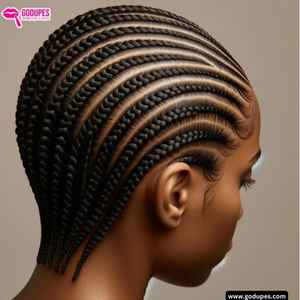
2. Box Braids into Cornrows
History and Legacy: Combining box braids at the front and cornrows at the back, this hairstyle blends two traditional African braiding techniques. Box braids have been traced back to the Himba people of Namibia, showcasing a rich history. By integrating cornrows, this style represents a fusion of different African braiding traditions, highlighting the diversity within African hair-styling practices.
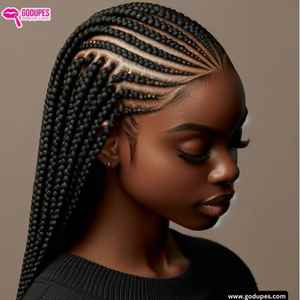
3. Zigzag Cornrows
History and Legacy: Zigzag Cornrows are a more modern and artistic take on traditional cornrows. While cornrows have deep roots in African history, the zigzag pattern is a contemporary variation that adds a dynamic and creative twist. This style reflects the evolving nature of African hairstyles, adapting traditional methods to modern tastes and artistic expression.
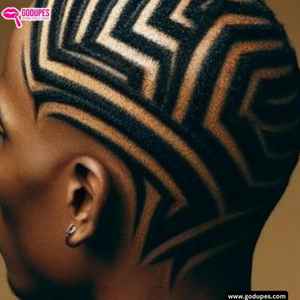
4. Cornrows with Beads
History and Legacy: Adorning cornrows with beads is a practice steeped in African history, often used to signify wealth, marital status, age, and rank within the community. Beads add a colorful and decorative element to the hairstyle, serving as a form of personal expression and cultural identity. This practice has been passed down through generations, maintaining its significance and popularity.

5. Ghana Braids
History and Legacy: Ghana Braids, also known as banana braids or fishbone braids, are believed to have originated in Africa over 500 years ago. These thick and raised braids are often styled in intricate patterns and have been a part of the African hair-styling tradition for centuries. They carry cultural significance, often worn during ceremonies and special occasions, and are a symbol of artistic heritage.
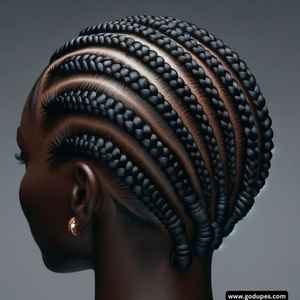
6. Cornrow Ponytail
History and Legacy: The Cornrow Ponytail is a modern adaptation of traditional cornrows. While cornrows themselves are deeply rooted in African culture, styling them into a ponytail reflects contemporary influences.
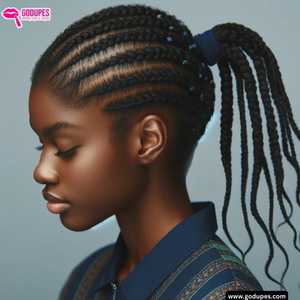
This style merges the cultural significance of cornrows with the practicality and elegance of a ponytail, showcasing the adaptability of traditional styles to modern aesthetics.
7. Side-Swept Cornrows
History and Legacy: Side-swept cornrows are a contemporary variation of the classic cornrow style. While maintaining the traditional technique of cornrowing, sweeping them to one side adds a modern and asymmetric aesthetic.

This style exemplifies the evolving nature of traditional hairstyles, embracing modern trends while retaining cultural roots.
8. Cornrows with Natural Hair Bun
History and Legacy: This style combines the traditional technique of cornrowing with a natural hair bun. The cornrows hold a historical significance, while the bun adds a contemporary and elegant twist.
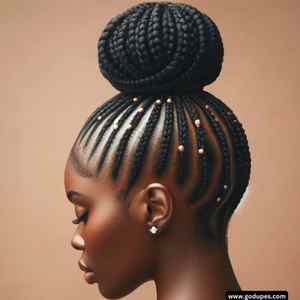
This combination symbolizes the fusion of traditional practices with modern hair-styling trends, creating a look that honors heritage while embracing current fashion.
9. Half Cornrows Half Open
History and Legacy: The Half Cornrows Half Open hairstyle is a modern innovation. It represents a blend of traditional cornrowing with the freedom and versatility of leaving hair open.
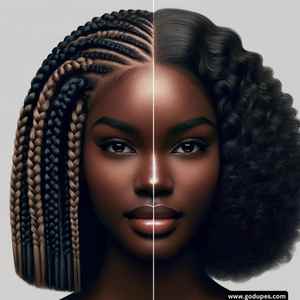
This style reflects the adaptability of African hair-styling techniques to contemporary tastes, allowing for a blend of structured design with natural hair texture.
10. Fishbone Cornrows
History and Legacy: Fishbone Cornrows are a stylistic variation of traditional cornrows, resembling the skeleton of a fish. This intricate pattern showcases the skill and creativity involved in African hair braiding.
The fishbone pattern, while a more recent innovation, pays homage to the intricate weaving techniques historically used in African cultures, demonstrating the artistry and complexity of African hair-styling traditions.
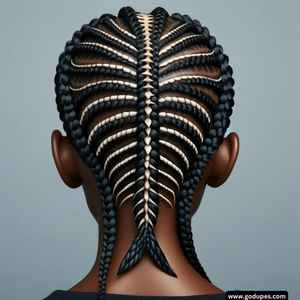
Why don’t you read our guide on brush dupes!
Origins and Evolution of Cornrow Hairstyle
Cornrow hairstyles have a rich and profound history that spans centuries and continents, deeply rooted in African culture. Here’s an overview with key facts and figures:
- Ancient Africa: The earliest evidence of cornrows dates back thousands of years in Africa. Sculptures and paintings in ancient Egypt depict figures with cornrowed hairstyles, suggesting that these styles were prevalent as early as 3000 B.C.
- Cultural Significance: In many African societies, hair was, and still is a significant cultural, social, and spiritual symbol. Hairstyles often indicate a person’s tribe, marital status, age, wealth, and rank within the community.
| Era/Aspect | Description |
|---|---|
| Ancient Africa | -The earliest evidence dates back to 3000 B.C. in Egypt. – Indicated social, spiritual, and tribal identity. |
| Transatlantic Slave Trade | – Preserved by enslaved Africans in the Americas. – Used as a communication tool and form of resistance. |
| Civil Rights Movement | – In the 1960s-1970s, symbolized black pride and political statements. |
| Mainstream & Pop Culture | – Gained popularity in the 1970s-1980s through celebrities and athletes – Became a widespread fashion statement. |
| Cultural Appropriation Debates | – Adoption by non-African individuals sparked discussions on cultural respect and appropriation. |
| Artistic and Stylistic Developments | – Modern innovations and fusions with other styles. – Global recognition as a symbol of cultural identity and artistic expression. |
| Facts and Figures | – Worn by prominent figures across various fields. – The global hair care market, valued at $99.53 billion in 2023, is expected to experience significant growth, reaching $147.49 billion by 2030 |
Transatlantic Slave Trade Impact
- Diaspora and Preservation: During the transatlantic slave trade (16th to 19th centuries), enslaved Africans brought cornrow hairstyles to the Americas. Despite harsh conditions, these styles were preserved as a link to their heritage.
- Communication Tool: It’s believed that, in some cases, cornrows were used as a means to convey messages and even maps for escape routes among slaves, signifying a form of resistance and resilience.
20th Century to Present
- Civil Rights Movement: In the 1960s and 1970s, during the Civil Rights and Black Power movements, cornrows and other natural hairstyles became symbols of black pride and political statements.
- Mainstream and Pop Culture: By the 1970s and 1980s, cornrows started to gain popularity in mainstream fashion, partially due to celebrities and athletes. This trend continued into the 21st century, with cornrows becoming a widespread fashion statement across different cultures and ethnicities.
- Cultural Appropriation Debates: The adoption of cornrows by non-African individuals has sparked debates around cultural appropriation, highlighting the need for understanding and respecting the historical context of these hairstyles.
Artistic and Stylistic Developments
- Innovation and Fusion: Modern stylists have innovated and fused cornrows with various other hairstyles, leading to a wide array of designs that blend traditional techniques with contemporary fashion.
- Global Influence: Today, cornrows are recognized globally, not just as a hairstyle but as a symbol of cultural identity, artistic expression, and historical significance.
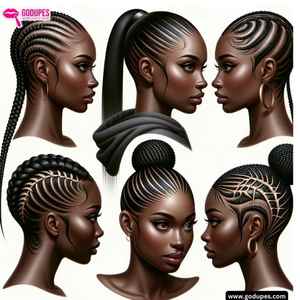
Cornrow hairstyles, therefore, represent more than just a fashion trend. They are an integral part of African heritage, a symbol of resilience and identity, and a canvas for artistic expression that resonates globally.

